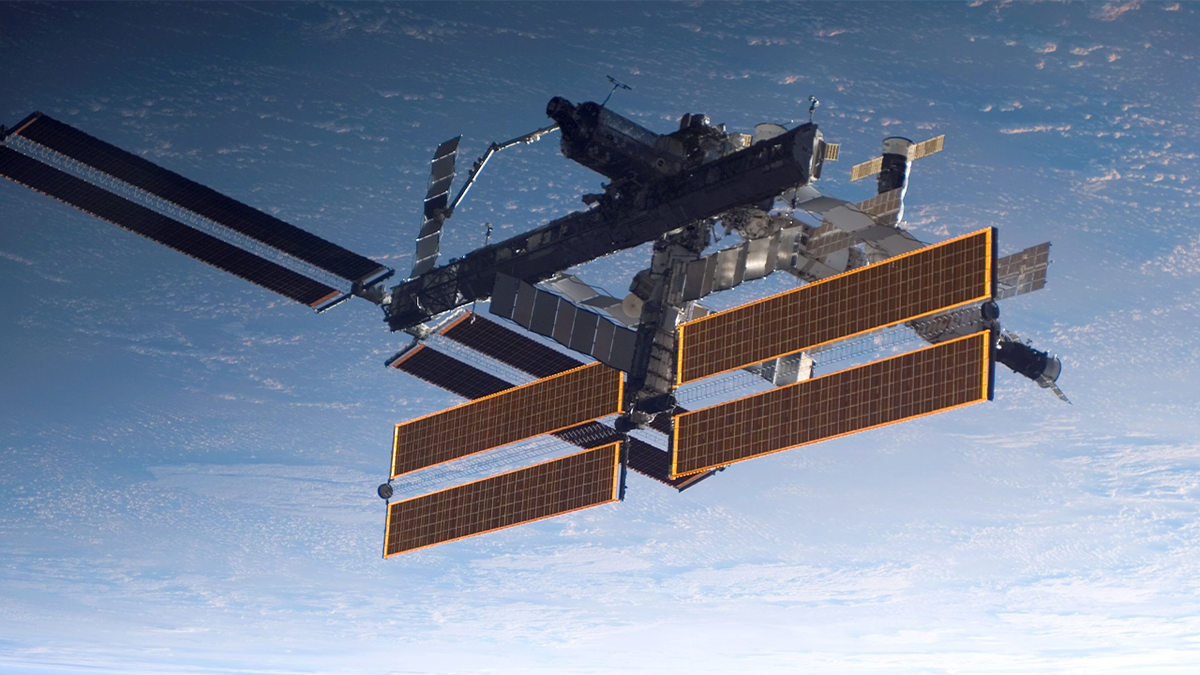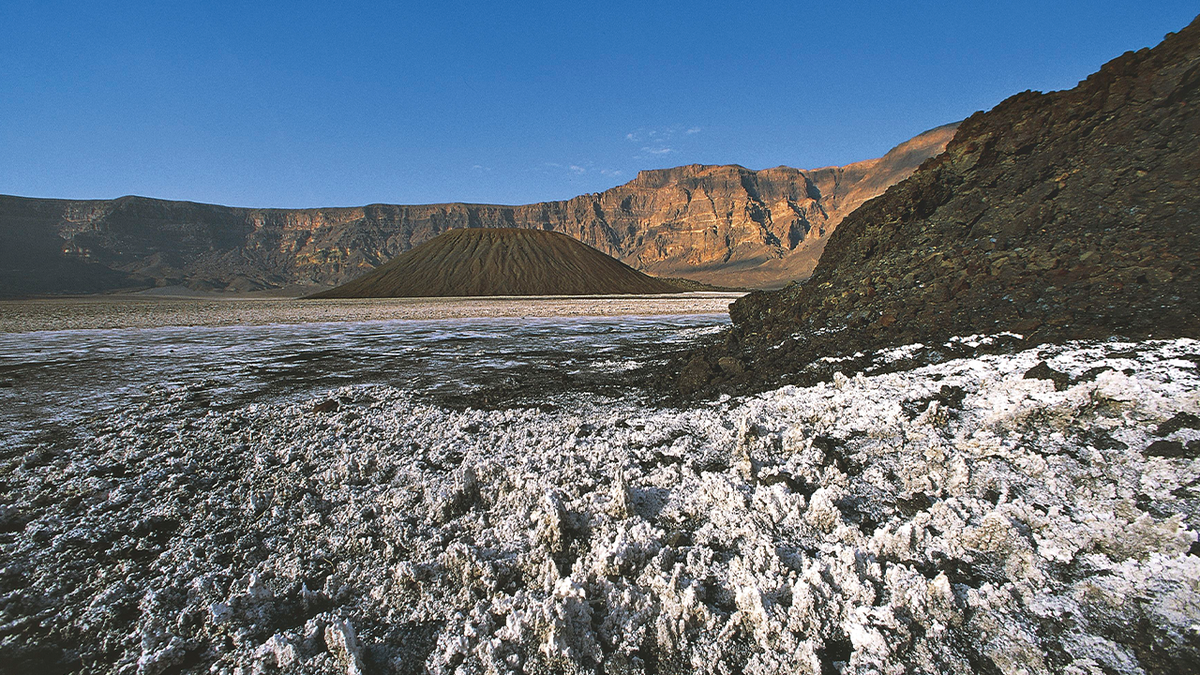In a distant space of the Sahara desert sits a 3,000-foot deep volcanic pit that appears like a ghoulish cranium when considered by area, NASA images present.
The NASA Earth Observatory mentioned final week an astronaut aboard the Worldwide Area Station noticed the odd formation within the Tibesti Mountains within the Republic of Chad. The images had been initially taken in February of this yr, and later re-shared by NASA.
“The 1,000-meter (3,300-foot) deep volcanic pit and soda lake Trou au Natron in northern Chad has the look of a ghostly face staring again at you,” the NASA Earth Observatory mentioned in a weblog publish final week.
NASA SURPRISED TO DISCOVER ‘DINKY’ MOON ORBITING ASTEROID IN CLOSE FLYBY

The deep volcanic pit and soda lake, Trou au Natron, in northern Chad that seems to appear to be a cranium from area. (NASA Earth Observatory )
The images present what seems to be an enormous cranium formation, with two eye sockets and a nostril surrounded by a white materials that builds out the looks of a cranium. NASA mentioned the attention sockets and nostril are literally “cinder cones—steep conical hills constructed round volcanic vents,” whereas the white materials is “a mineral crust manufactured from a salt referred to as natron.”
NASA SPACECRAFT CATCHES ‘EERIE FACE’ ON JUPITER

On this handout picture supplied by NASA, the Worldwide Area Station is seen over a blue and white Earth, taken shortly after the Area Shuttle Atlantis undocked from the orbital outpost. (NASA by way of Getty Photos)
The Tibesti Mountains are thought of one of the vital distant and remoted areas of the world, which has made researching Trou au Natron tough for scientists.
NASA PUBLISHES NEVER-BEFORE-SEEN PHOTOS OF ‘RAVIOLI’ MOON ORBITING SATURN

Salt deposits across the caldera of Trou au Natron, Tibesti Area, Chad. (Getty Photos )
NASA did say that analysis signifies the world was full of a glacial lake roughly 14,000 years in the past, and samples of fossilized aquatic algae collected in 2015 dates again an estimated 120,000 years.

An astronaut on the Worldwide Area Station snapped this shot of Trou au Natron, in northern Chad that appears like a cranium from area. (NASA Earth Observatory )
Final month NASA launched photos displaying one other “eerie face” that was captured when the Juno area probe handed Jupiter.
“The picture reveals turbulent clouds and storms alongside Jupiter’s terminator, the dividing line between the day and evening sides of the planet,” an outline of the picture reads. “The low angle of daylight highlights the complicated topography of options on this area, which scientists have studied to raised perceive the processes taking part in out in Jupiter’s environment.”
CLICK HERE FOR MORE US NEWS

The face (pictured right here) seems to have eyes, a nostril and a mouth. (NASA/JPL-Caltech/SwRI/MSSS)
NASA mentioned that folks recognizing faces in area photos is a case of pareidolia, outlined as “the impact that causes observers to understand faces or different patterns in largely random patterns.”
CLICK HERE FOR MORE US NEWS
Fox Information Digital’s Michael Lee contributed to this report.
#Area #station #astronaut #spots #ghostly #picture #staring #Earth
